 |
Brevis...
Price: $350
Likes: sound quality, price
Dislikes: where did I put it?
Wow Factor: "ideal for mobile players"
More info: Resonessence Herus
(©Everything Audio Network)
by John Gatski
In the past four years, I have reviewed three Resonessence DACs in various price ranges, including the diminutive-sized portable Herus reviewed here. I have to say they all have an essentially balanced, smooth sonic signature that varies in refinement, based on the price.
The $350 Herus reviewed here is the smallest and lowest-cost Resonessence DAC, but it is a hi-fi product that gets you into the high-end sound without the bells and whistles and the extra expense of high-end DACs. And it is perfect for those on the go with smart phones and tablets that are capable of transmitting native high-res DSD via DoP and PCM up to 24/352.8. (In fact, the Herus will play 24/384 material at the 352.8 rate).
Features
The Herus DAC is only 3-inches long and 1.2-inches thick with a USB B female connector on one end and a headphone jack on the other. The logo illuminates blue when it sees a signal. Nothing fancy.
The heart of the Herus is the mobile ESS Sabre DAC ES-90102M chip, optimized for USB 2.0’s low-current, 5V DC power. Although its numbers are not as impressive as the mighty ESS Sabre32 flagship DAC chip, it retains much of the balanced, warm, smooth and detailed character of its more expensive siblings.
The Herus DAC can decode up to 24/352.8 (DXD) in PCM and up to DSD 2X (5.6 MHZ/128X) via DoP. Gain for the Herus is adjusted in the playback program, but it is a hardware volume control in the Sabre chip that is software controlled. The audio is all processed in the DAC chip.
Resonessence President Mark Mallinson said the volume must be handled by the chip to ensure proper DSD decoding via DoP. “If it was doing a software volume, DSD wouldn't work — since it relies on bit perfect audio from the player program,” Mallinson explained.
Resonessence President Mark Mallinson said the volume must be handled by the chip to ensure proper DSD decoding via DoP. “If it was doing a software volume, DSD wouldn't work — since it relies on bit perfect audio from the player program,” Mallinson explained.
The DAC spec is whic is listed at 100 dB S/N and dynamic range, but Resonessence claims actual performance is -106 to -108 dB. This chip was designed to offer good performance at USB 2.0-supplied 5V,500 mV power. The typical power consumption ranges from 126 mW with a 32 ohm headphone load, to 9.5 mW with a 600 ohm headphone load. The THD plus noise spec ranges in the .003% region with most headphone impedances, not as good numbers as its big brothers’, but decent for such a low-power device. In fact, the numbers don’t truly reflect how good it sounds.
**For Mac, the Herus works with most computer players, including Audirvana, Pure Music, AudioGate, and iTunes and a host of recording/editing playback systems. In my experience with the Mac and Herus, it worked well with all the programs I tried. Some Windows programs may need a driver.
The teeny Herus is a downright super bargain at $350. Great sound with a smooth, detailed character, good separation and the ability to drive most headphones Herus works with computers, Android tablets and phones, and iPhone and iPads.
As or maybe more important, the Herus portable DAC headphone amp is a perfect companion to all the USB-equipped portable devices that inhabit our modern world: tablets, smart phones, laptops, etc. My review focused on Mac computer and Android phone and tablet, but Resonessence says that Herus also works with ipad and iPhone, but you need the camera dock to get USB connectivity.
Not normally promoted as a recording tool, I found Herus a quality listening tool for audio professionals and home recordists who want to monitor their recorded projects via headphones — without having to carry around a bigger headphone amp/DAC and the tethering-AC cord. I used it with a variety of editing and playback programs, and it worked with ease. Even did a final quality check on a 24/352.8 acoustic guitar stereo recording that I had made when traveling on a short vacation.
The setup
I had several DACs on hand during the evaluation process, including my other USB-powered Resonessence, the step-up Resonessence Concero HP ($850) for comparison, and my high-end Mytek 24-192 DSD and Benchmark DAC2D. For headphones, I used the Shure SRH-1840, Sony MDR-7510 Professional and the AKG K702 Anniversary.
For audiophile playback I started off with my Macbook Pro and Audirvana software, and later plugged into a Dell Venue 7 tablet with the USB Audio Player Pro app (separate review upcoming) and a HTC Harman-Kardon Edition smart phone with USB Audio Player Pro. USB Audio Player Pro allows most Android devices to play up to 24/384 PCM playback out the device’s USB port. You just need an OTG cable to enable the host player mode to transmit the audio, but it works.
The audition
As soon as I plugged the Herus into the Macbook Pro, I selected the Herus in the Mac’s Core Audio Audio settings, and it was immediately recognized; no extra software needed. The volume is controlled by the program software; no knobs on this little DAC. I played the music via Audirvana.
First up, my download of the 2L 24/352.8 DXD-recorded Mozart — Violin Concertos (three separate performance — the D, G and A Concertos). Via the SRH1840, the violin tones were vivid with a good deal of the string harmonics and room reverb that I hear with more expensive DACs. And the imaging and separation was quite good. The balanced, yet smooth, tone, indicated the ESS DAC chip underpinnings; you could definitely tell it was a Resonessence DAC.
Compared to the almost $850 Concero HP, there was slightly less width and depth and a tinge less sparkle to the upper end transient tones, but not a major league difference. I rather liked the sound of this diminutive-sized HP amp/DAC. The DAC2 and Mytek, of course, had more inner detail and increased imaging than Herus. But those are $1,500 plus DACS. You expect that. For the Herus to be in the ball park is a testimonial to its design.
 |
| Herus setup with Dell Venue tablet, Shure HPs and Pluggable USB 2.0 powered hub |
I switched to my AKG K702 HPs and cued up a 24/192 dub of Miles Davis’ “Teo,” a cut from the reissue SACD of Miles Davis — Someday my Price Will Come. This 50-year old recording has a fantastic -sounding drum set up; the cymbals and snare are quite detailed and amply spread out. You can also hear the recording studio room reverb tails and decay. The better the DAC, the better the percussion sounds. Guess what. The little Herus does a pretty good job of nailing the transients and reverb tails, not to the degree of the Benchmark, but enough to know it is high res. Oh, and did I mention it was $350?
I played several albums of DSD downloads via Herus and Audirvana. As with PCM, it has that signature warmth and balanced of ESS DACs. I played one of my own DSD 5.8MHZ/128X jazz guitar recordings, as recorded on a TASCAM DA-3000 hi-res recording. To my ears, DSD/2.8 MHZ/128X is a little tighter in the bass than standard DSD 2.6 MHz/64X.
For my computer recording rig, the Herus came in handy. No power cords and components looking for a place to be placed. A simple little rectangle that takes up very little space. Just plug in the phones and record, edit, master, etc. The little guy is plenty good to check the quality of your work with good headphones.
For my computer recording rig, the Herus came in handy. No power cords and components looking for a place to be placed. A simple little rectangle that takes up very little space. Just plug in the phones and record, edit, master, etc. The little guy is plenty good to check the quality of your work with good headphones.
I used Herus with Apple Soundtrack, GarageBand, and Audacity. It was instantly recognized and I never had a single glitch. Volume was adjusted in the program. I also plugged into the Herus to monitor a 24/352.8 acoustic guitar recording I made with my recording gear and the Mac. It was just what I needed for the final edits and QC.
Ideal for Android players
To take advantage of Herus’ portability, I added a OTG cable to my Dell Venue 7 tablet, so it could play high-res music from the USB Audio Player Pro Android program. You need the OTG to enable the host mode and connect the required USB A-to-USB B cable to the DAC. Tablets only have micro connectors and cannot connect to otherwise-terminated, outboard USB gear without this adapter
A word of warning, the tablet or smart phone supplies the power to the DAC, which can run the battery down in just over an hour if the DAC does not have its own power, like Herus. You can avoid power loss by connecting the Android device to a powered USB hub with the other connection on the OTG. To enable this powered setup, plug in the OTG cable into the Android devices micro USB port. You then connect the OTG adapter cable’s female micro USB output port to a micro SD male-to-USB A (standard or mini) male connector cable, which is then plugged into the powered USB powered hub.
You then attach a USB A male-to-USB A-male (or USB A male mini) cable into the other OTG input: a USB A female port. That cable is connected to any A or Mini-A port on the hub, and finally, the USB A-to-USB B cable goes from the hub to the DAC. Voila, not only do you get native high-res PCM output from Android, the DAC is powered independently, and the Android device is charged from the same USB connection. It sounds complicated, but in reality it is easy to hook up, and you can listen for hours as the battery stays charged
On some Androids you can keep the battery charged without the powered hub, by plugging the devices’s micro USB terminated charger straight into the OTG and plugging into the other OTG port with a USB A-to-B cable connected straight into the DAC. My Dell charger provided enough power to run the DAC and charge the battery — without the hub. (The powered hub also allows connection of external hard drives to Android devices, but we will save that for another day.)
Once I had the DAC connected to the Android, I fired up USB Audio Player Pro.This dandy PCM playback program allows most Android phones and tablets to play and transmit the native PCM audio to an external USB DAC — up to 24/384.
Operation was a snap with USB AudioPlayer Pro; it allows for volume control and simple playback preferences. It is an amazing music player for $7. I played numerous bits of hi-res music, including high sample rate recordings with the Dell tablet with no problems. On the Mozart — Violin Concertos and Haydn/Bartok — Cello Duos, also a 2L 24/352.8 DXD, the sound quality via the tablet was as good through the Herus as the Macbook Pro and Audirvana playback, Clean, quiet, smooth and plenty of detail, especially for the money. High-end DACs from 5-10 years ago don’t sound this easy on the ears.
The Herus retained its good Android performance when I switched to the HTC 1 HK Edition smart phone, using the OTG cable, with USB Audio Player Pro installed. Screen was a little harder to see than the bigger tablet, but the audio was first rate. I even played back a 24/352.8 acoustic guitar stereo recording via the smart phone/USB Audio Player Pro and Herus.
The Herus retained its good Android performance when I switched to the HTC 1 HK Edition smart phone, using the OTG cable, with USB Audio Player Pro installed. Screen was a little harder to see than the bigger tablet, but the audio was first rate. I even played back a 24/352.8 acoustic guitar stereo recording via the smart phone/USB Audio Player Pro and Herus. Man, do I love that set up. Sadly, the HTC phones does not charge from the hub while playing through Herus, but that is an Android problem.
Any complaints? Not much. The size can have its own drawbacks. I misplaced it several times and it is so small, it was hard to find. Since it does 352.8, it would be nice to tweak it slightly so it could also play 384 sample rate music without downsampling. A sample rate or word length indicator would be nice, but you can’t expect too many bells and whistles — since it is North American manufactured and only $350.
The verdict
My third Resonessence DAC and yet another winner. While the flagship Invicta was the ultimate Resonessence product — with a fantastic headphone amp and SD Card player onboard — and the Concero HP offered much of the same tonal quality in a down-priced, HP-only version at under $900, the teeny Herus is a downright super bargain at $350. Great sound with a smooth, detailed character, good separation and the ability to drive most headphones Herus works with computers, Android tablets and phones, and iPhone and iPads. During the review, it become my travel DAC — pairing it with my Dell tablet and USB Audio Player Pro. Load up the external micro SD card with hi-res PCM, plug in the DAC with an OTG cable, and away I would go with my Shure SRH-1840’s stuffed in the bag.
With the Herus review now complete, Resonessence is now three for three in Everything Audio Network Stellar Sound Awards.
John Gatski is publisher/owner of the Everything Audio Network. Articles on this site are the copyright of the ©Everything Audio Network. Any unauthorized use, via print or Internet, without written permission is prohibited.
John Gatski is publisher/owner of the Everything Audio Network. Articles on this site are the copyright of the ©Everything Audio Network. Any unauthorized use, via print or Internet, without written permission is prohibited.


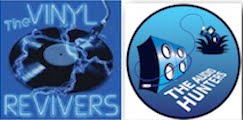

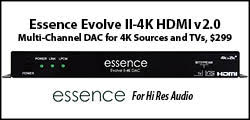

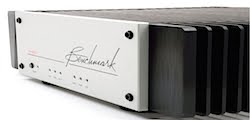


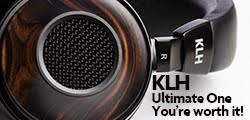
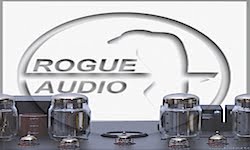

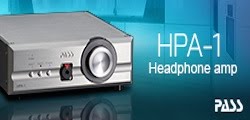


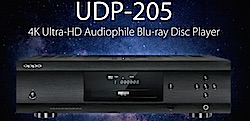


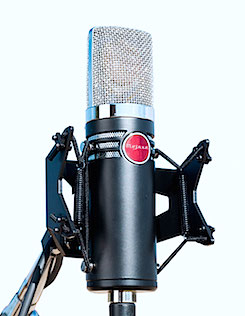
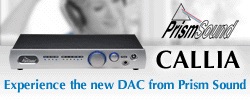
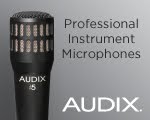
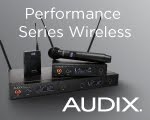
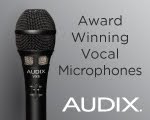







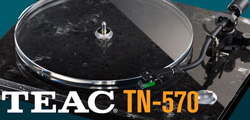





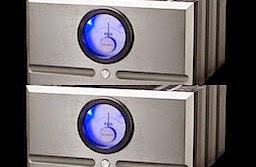
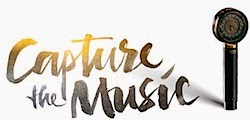


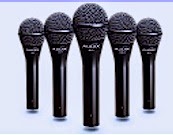


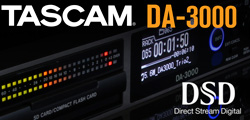

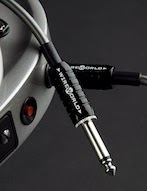

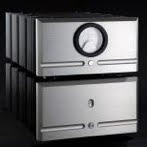









No comments:
Post a Comment